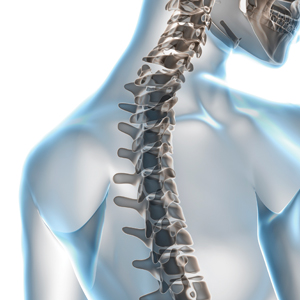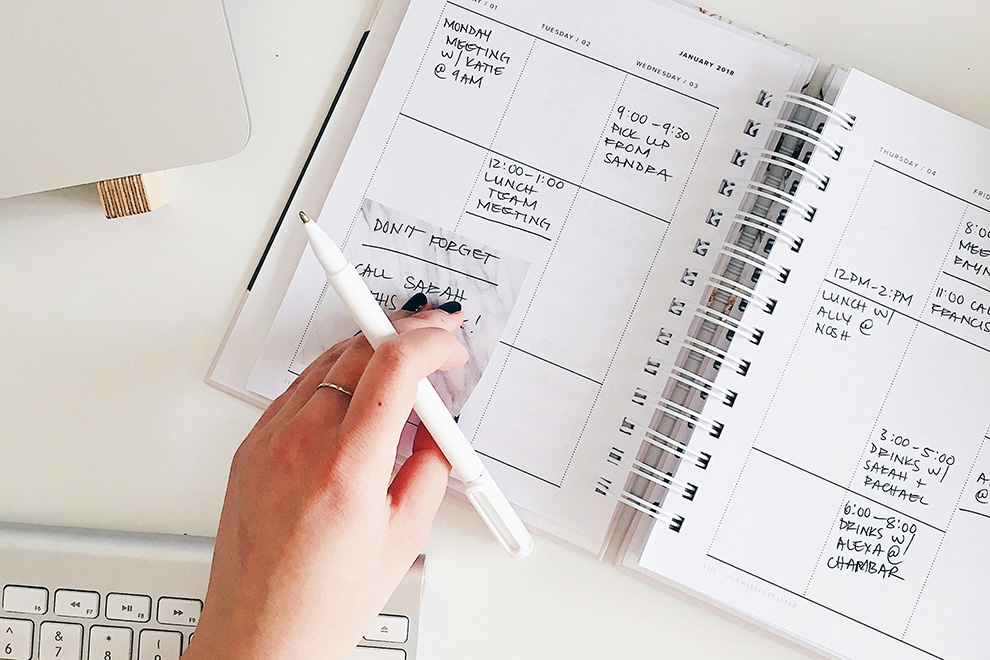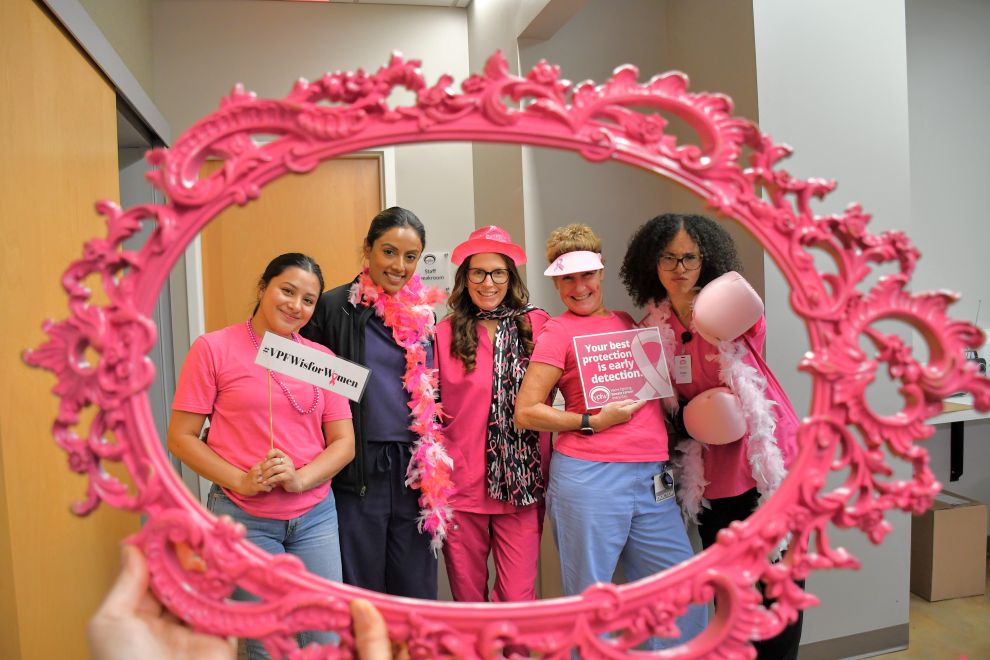From bending down to put the baby into the crib to toting around a carseat, grocery bags, and backpacks, the strain on our backs is a real pain.
Last year, when I was teaching an occupational therapy class about ergonomics, a quick show of hands revealed that most of my students at some point in their academic careers had either studied or used their laptops while sprawled out on their beds or on the floor. Is this a familiar scene in your home? Are your kids aware of the impact these habits can have on their bodies?
Ergonomics are typically connected to the work place. When they hear the term, many first consider computer positioning, ergonomic office chairs, and repetitive strain injuries from keyboarding. But everyone can experience physical stress from awkward positioning. Whether you’re brushing your teeth at a vanity that’s the wrong height, your spouse is lifting a bag of potatoes from the floor to the kitchen counter, or your teen is hunched over a video game for hours on end, recognizing the importance of ergonomics helps you and your family stay safe at home and on the go.
A quick scan of your neighborhood, for example, may show the majority of students carrying overloaded backpacks to and from the bus stop. Students can experience muscle strain and other injuries associated with wearing heavy or improperly sized or designed backpacks. Once home, changing the study routine to include sitting at a desk or table with the back supported and feet flat on the floor can mean a healthier, happier child as this school year unfolds. Encouraging kids to form good postural habits now can lead to increased benefits down the road.
Having a handle on home ergonomics goes well beyond keeping your kids on track for good posture, though, as the whole business of parenting requires an approach to good health, fitness, and ergonomics. According to Paul E. Caldwell, MD, of Tuckahoe Orthopaedics, “New parents are particularly vulnerable to injury. They are making sacrifices for their kids and sometimes don’t take care Of themselves.” Dr. Caldwell should know – he is an orthopedist, husband, and dad to twin 8-year-olds and a 6-year-old.
The physical activities associated with direct care can be risky business. As a parent, tasks from feeding a baby to picking up toys on the floor – and stepping on them! – can cause discomfort.

“Life is full of twists and turns, so train for living,” Dr. Caldwell recommends, likening parenting and other life roles to sports training. “Maintaining core muscle strength is critical. Stretching, yoga, and strength training are beneficial for maintaining good posture and overall health.” Using good body mechanics, in conjunction with staying in shape will help minimize risk of injury.
Parents are simply not accustomed to the manual tasks associated with caregiving, particularly in those early years of parenting, Dr. Caldwell explains. Bending over to tie a shoe for the umpteenth time or carrying squirming children in awkward positions can be challenging. Dr. Caldwell reports that even kneeling and crawling can contribute to injury. He adds, “Patients may experience shoulder or back injuries just by lifting a child up over their head, or reaching behind them, to tend to a toddler while driving.”
Parents toting babies in infant car seats are particularly at risk because they are often not used to awkward and heavy lifting. It should be noted that an infant seat typically weighs at least twelve pounds without the baby in it, so carrying the baby in the seat is quite a haul. Dr. Caldwell also says, “Carrying the seat out to the side is dangerous, because that can lead to a variety of issues such as tendonitis and back strain.” Instead, he suggests carrying the seat sideways close to your body in front of you.
Often, the everyday, repetitive tasks of parenthood can cause unexpected injuries. Jaime Smiley, mom to Tyler, 5, and Anna, 3, first experienced a back Injury as a parent when her son Tyler was seven months old. “I was kneeling on the floor, and lifted and twisted at the same time to get Tyler out of the Exersaucer,” Jaime says. To make matters worse, since she was talking on the phone, her neck was also out of alignment with the rest of her body. As a result, Jaime required medication and physical therapy. Even though she was aware of the need to use good ergonomics, this incident brought the point home to be diligent about positioning.
Jaime said other physical tasks she needed to be extra careful with were lifting children out of a crib (particularly After the mattress is lowered), putting children in the car seat, and giving kids a bath. Sanders and Morse in their scholarly article, The Ergonomics of Caring for Children: An Exploratory Study, note that parents of children under four reported musculoskeletal pain in what they called high-risk practices including: carrying a Child on one hip; lifting a child from the floor; bending to wash a child; changing a child’s diaper on the floor; pushing a child on a seated toy; and feeding in awkward positions – only the things parents of infants and toddlers do every single day.
In addition to strength training, Jaime shared another solid strategy for parents. Encourage kids to become more independent in everyday tasks such as climbing up into the high chair and car seat (with supervision) as early as possible. Sometimes, even when you think they aren’t ready to get in the game, kids may just need some encouragement. Jaime said her daughter, Anna, who was much smaller than her son at that age, couldn’t climb into the car seat at first.“I bought a step stool for her to stand on in the car, so I wouldn’t need to bend. However, to my surprise, she didn’t want any part of the stool and said, ‘I do myself’ as she climbed into the car seat!”
Maintaining good physical fitness is an ongoing journey, and Dr. Caldwell advises, “Just because you went to the dentist and received a good check-up, doesn’t mean that you stop brushing your teeth.” And while it makes sense that parents of children under four may be at the greatest risk for injury from associated direct care tasks, Dr. Caldwell notes that parents of older children are susceptible to different types of parenting-related injuries.
Many of us already know that as children get older and participate in organized sports, life gets busier, and there seems to be even less time to work out. As Dr. Caldwell says, “The family that plays together, stays together. As a parent, you want to be able to shoot baskets with your daughter or son – or participate in whatever sport they are into.” Sometimes this comes with additional risks, however. Dr. Caldwell shared that his kids are currently enthusiastic about Jumpology, a huge arena featuring over 8,000 square feet of connected trampolines. He says, “Recently, as I was jumping on the trampoline, I was realizing that I was potentially setting myself up for injury.”
Something else that a family often does together is watch television. And these days, it’s important to consider where the TV is placed. Although home design trends might include mounting the television above the fireplace, this space-saving solution could also result in neck pain or a headache for someone in your family. Remember the last time you went to the movie theater and sat too close to the screen? Odds are good you went home with a stiff neck. Besides the fact that electronic devices are not compatible with heat or smoke, research shows that for ergonomic safety and health, a television should be positioned so the viewer’s eyes are in horizontal alignment with the top fourth or third of the screen.
Dr. Caldwell says to help your family members decrease their risk of injury, encourage everyone to strengthen their core muscles. As parents, avoid trying to do too many things at once and distractions like phone conversations or other daily tasks (easier said, than done, right?) So that when you are moving, you are more in tune with your body, and less prone to injury. Prevention of injury and awareness of the ergonomic issues that affect your family at every stage of the game are key to long-term health.
Ergonomics Through the Ages
Infants and Toddlers
• Keep your thumb close to your hand when holding a baby or lifting. This decreases strain on two major muscles and tendons that control movement of the thumb. Avoiding this position will make it less likely for you to have what’s called mommy thumb. This repetitive strain injury, also known as De Quervain syndrome, is common in new moms because of the anatomy of the female hand. It can be debilitating, but can usually be avoided.
• Avoid awkward feeding positions, whether you are breastfeeding, bottle-feeding, or feeding a toddler in a high chair. Let’s face it, this activity will become a huge part of your life for a number of years. Over time, these awkward positions can lead to repetitive strain, poor posture, and injury.
• When carrying an infant car seat, carry it sideways in front of you, close to your body.
• Ensure the stroller handle height is appropriate for you and grip it loosely, wrapping your thumbs around the handles.
School Age and Beyond
• Encourage your children to do their homework at a desk in a supportive chair with their feet flat on the floor and to take stretch breaks every twenty minutes.
• Help your child choose a backpack that is well-designed, fits well, and is not too heavy.
All Ages
• Lift with your legs, not your back. This applies to lifting babies, toddlers, bags of mulch, grocery bags, suitcases, you name it.
• Always keep your spine and hips in alignment when lifting.
• Carry heavy items (babies, car seats, suitcases, lawn chairs, and athletic bags) close to your body. The farther away they are from your body, the more your body is at risk for musculoskeletal injury.
• Limit carrying unnecessary items. Someone once told me when we were all going on a trip, “You have more gear than the pioneers crossing the prairie!” As challenging as it is, try to minimize how much you carry, and if necessary, make multiple trips while balancing the load. Another good strategy? Avoid the pitfall of carrying older kids’ gear by having them carry their own provisions.





